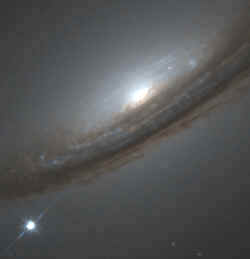Turning On the Universe

One approach to dark energy known as quintessence assumes that a special repulsive field permeates all of space. Each theory specifies a function for the energy contained in the field, somewhat like the energy of electromagnetic fields. The problem, according to Andreas Albrecht of the University of California at Davis, is that in order to match all of the astronomical observations, the repulsion has to be weak for most of the history of the Universe and only become significant in the recent past, when the expansion began to take off. But that sudden “turn-on” behavior often requires theorists to choose specific parameter values just to match the data. “You’re simply pulling numbers out of a hat,” says Albrecht.
Albrecht and graduate student Constantinos Skordis came up with a class of energy functions, or “potentials,” for the quintessence field that uses only parameters made from simple combinations of fundamental constants of nature: h (Planck’s constant), c (the speed of light), and G (the gravitational constant). They showed that, long after the big bang, such a field can suddenly become dominant over other matter and energy in the Universe and spur on a phase of accelerating expansion. The exponential form of the potentials also happens to match recent results from the world of superstring theory, suggesting what might be its first direct connection with cosmology.
Quintessence models are based on the concepts developed in the 1980s for a now well-accepted theory of the early Universe called inflation, which also involves an accelerating expansion. So Albrecht, who is one of inflation’s architects, sees it as a natural source of inspiration for explanations of the present-day acceleration. On the other hand, he notes, “you could well accuse us of being very unimaginative.”
Joshua Frieman of the Fermi National Accelerator Laboratory in Illinois says that many researchers have been struggling with the “why now?” problem–the fact that the accelerated expansion began only a few billion years ago, when most of the post-big-bang action should have settled down. So he thinks the new work could be important, but he and Albrecht are both anxious to begin testing such models against the increasingly precise observational data that will be pouring in over the next several years. Without clear tests, theorists are just looking for models with the right properties, says Frieman. “There’s still a lot to explore,” says Albrecht.


